New assessment shows action needed on permafrost and climate change
December 2020
Scientists and community members have long raised concerns about how rapid climate change affects permafrost in Northern Arctic communities. The impact is real and far-reaching: Canada has the longest Arctic coastline in the world, and these areas have warmed at a rate two to three times greater than the global average in the past fifty years.
Now, the urgent need for a scientific action plan to address this issue has been underscored by the Rapid Response Assessment of Coastal and Offshore Permafrost report — a recent study of coastal and offshore permafrost conditions, with contributions from 13 scientists working at Natural Resources Canada’s (NRCan) Geological Survey of Canada (GSC).
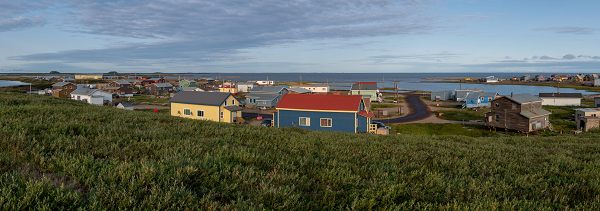
Canada’s Northern communities, such as Tuktoyaktuk, already feel the everyday effects of climate change.
Real-life impacts
The challenges are especially widespread along the Beaufort coast in Canada and Alaska, as well as on Siberian shores. In communities like Tuktoyaktuk, Northwest Territories, for example, permafrost thaw regularly threatens homes, roads and important cultural sites as well as marine and coastal environments. This is having a profound effect on Northern and Indigenous traditions, especially for those who rely on the land, sea and ice for their livelihood.
GSC scientists provided leadership and technical contributions for the permafrost assessment report. Undertaken at the request of the United Nations Environmental Program (UNEP) and GRID-Arendal, a non-profit communications centre in Norway, the study examines the connection between climate change and permafrost and assesses the real-world impacts on Northerners and wider, global implications.
The topic is an important one and is top of mind for scientists and other concerned individuals and groups around the world. When UNEP first put out a call for contributors over two years ago, more than 70 leading subject-matter experts and local community members stepped up. Scott Dallimore, a research scientist with the GSC, acted as the technical lead, but he’s quick to point out the breadth, depth and commitment of the remarkable collaboration.
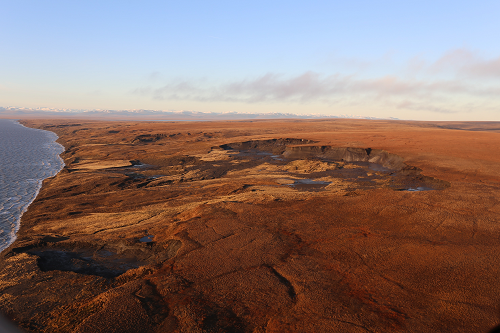
Permafrost thaw along the coast can result in sinkholes and other hazardous landscape conditions.
An all-in approach essential
“I think what motivated us to stick with this study over two years was the creativity and novelty of the effort as well as the feeling that scientists, Indigenous leadership and community members were working for the greater good,” says Scott.
“We took an interdisciplinary approach that included geologists, permafrost specialists, marine and coastal scientists, geophysicists and bio-geochemists. We sought input from Northern educators, and we talked with engineers struggling to maintain Northern infrastructure. Most importantly, we were ready to listen to how northerners would like to see the way we conduct Arctic science change so that they can be more directly involved and ensure there’s a place for their youth to participate.”
The result? An up-to-date and authoritative assessment of changing permafrost conditions that explains how the land, the coastline and offshore areas are connected. The Rapid Response Assessment report also presents an action plan that identifies important scientific knowledge gaps and provides recommendations on future research priorities. The scale and scope of these recommendations are wide: they include involving local communities in the process; incorporating local knowledge in the science; and ensuring that there are ways for Indigenous youth to get involved. The report also provides guidance for new science to help assess potential geohazards and develop targeted strategies to build more resilient infrastructure.
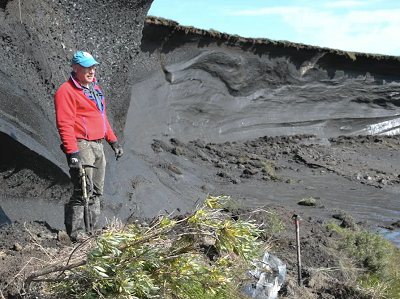
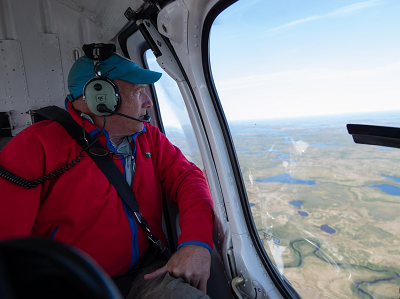
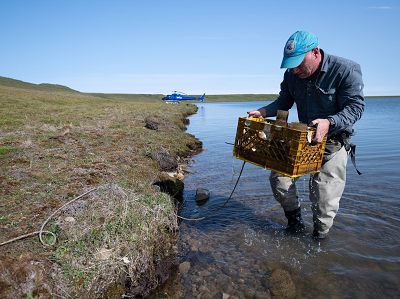
After assessing conditions on Canada’s Arctic coastline first hand, Scott Dallimore and an international group of 70-plus contributors say there’s an urgent need for an action plan now.
Sharing science differently
Scientists from the Geological Survey of Canada have studied permafrost for more than 50 years, publishing countless papers in peer-reviewed academic journals. This time, the goal was different in several ways from the usual one of refining and increasing the body of purely scientific knowledge. The contributors also wanted to share their findings with a wider audience. They wanted to share a wealth of photographs, videos, interactive maps, plain-language science and Indigenous knowledge that would explain in a relatable and practical way their personal experiences and concerns as well as their professional findings.
So they turned to an online portal called StoryMaps where scientists, community members and policy makers can explore various themes and hear first-hand from scientists and community members.
“The StoryMaps platform is a very unconventional way to share scientific assessments like this,” says Scott. “But we expect it can be a very engaging way to share our story. There’s no text book, no great long reference list, only real videos created by scientists and Indigenous groups, really great maps and high-quality graphics anyone can understand and learn from.”
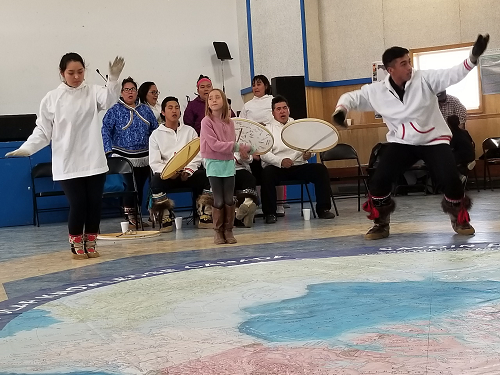
“Permafrost thaw in Canada’s North is affecting the traditional ways for Indigenous and local communities,” says GSC scientist Scott Dallimore. “It’s crucial to enable Northerners to participate more directly in the science moving forward.”
Potential global concerns
The team wants to get the word out for one important reason: potential global effects. Michelle Côté is a GSC scientist who contributed to the assessment. She points out that when permafrost thaws, greenhouse gases are released. There’s carbon dioxide, arising from the carbon in decaying organic materials that have been locked up in permafrost for thousands of years. There’s also methane — an estimated 30 times more potent than carbon dioxide — and it’s already leaking.
These are the two major greenhouse gases, and once they are in the atmosphere, they can contribute to or accelerate the pace of future climate change globally. For these reasons, a proper assessment of their current volumes and their rates of production is a matter of great importance. “We need to know how much is being released and if the rate will increase in the future,” says Michelle.
As the Rapid Response Assessment report and the contributions of its dedicated scientists show, when it comes to climate change it takes much more than a village — it requires a global effort.
- Explore:
Learn more about Scott Dallimore’s research on ResearchGate
Access the entire report here: Coastal and Offshore Permafrost Rapid Response Assessment
Simply Science photo gallery: Coastal research in the Arctic - Read:
Simply Science article: Arctic coastlines eroding up to 40 m yearly
Simply Science article: Supporting airport infrastructure in Canada’s North - Listen:
Simply Science podcast: The impacts of climate change on Northern infrastructure - Watch:
Simply Science YouTube video: Studying permafrost in Canada’s Arctic